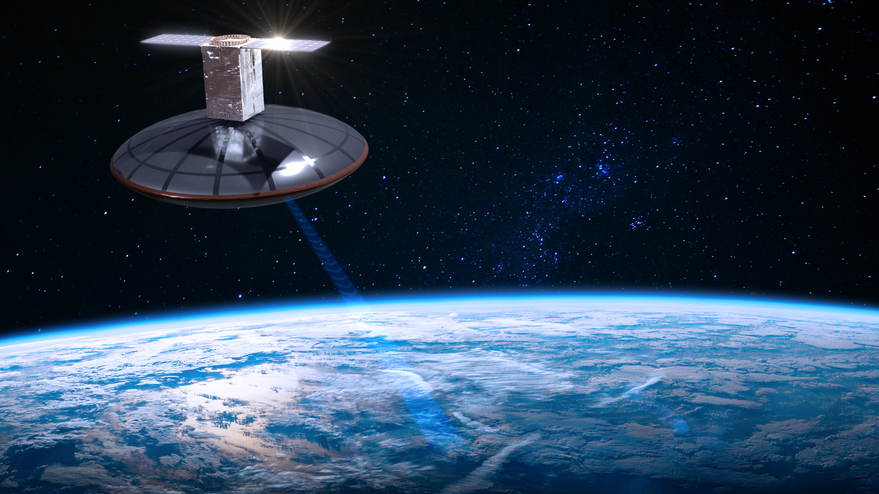
TAMPA, Fla. — Meteorological intelligence startup Tomorrow.io says it picked California-based Astro Digital to build the first two of potentially dozens of small satellites equipped with storm-tracking radars to improve weather forecasts.
The two initial demonstration satellites, both about the size of a mini-fridge, will be based on Astro Digital’s Corvus-XL satellite platform and deployed in late 2022 on an undisclosed rocket, according to Tomorrow.io director of strategy for space Aravind Ravichandran.
Tommorow.io does not have manufacturing or launch contracts in place for the rest of the planned low Earth orbit constellation of around 30 satellites, which it plans to begin deploying in late 2023 and complete in 2024, Ravichandran told SpaceNews in an interview.
The venture is also still working through regulatory application processes at the Federal Communications Commission, although it plans to draw from a pool of previously allocated spectrum for its operations.
Using a radar payload that Tomorrow.io is developing at its Boston headquarters, he said the full constellation aims to provide worldwide 3D precipitation maps that refresh every hour.
A NASA official confirmed similar data provided from the Dual-frequency Precipitation Radar on its Global Precipitation Measurement (GPM) satellite refreshes every two to three days, although the interval is not uniform at any one spot and becomes more frequent at higher latitudes.
For more frequent precipitation updates, forecasters rely on terrestrial radars to inform their weather models.
However, Ravichandran said much of the world is out of range of these ground-based networks, because they can only be deployed on land and tend to be limited to developed countries.
He said more frequent precipitation measurements in areas that ground-based radars do not reach will improve global information about hurricanes, floods and other extreme weather events.
Tomorrow.io, which changed its name from ClimaCell after raising $77 million in March, partnered with remote sensing specialists Muon Space to devise the architecture for its operational constellation.
Astro Digital also offers mission formulation services, but Ravichandran said Tomorrow.io decided to delegate this to another party because of the workload’s scale.
“There’s a tremendous amount of work to get these initial two satellites built,” he said.
“So we’re focused with Astro Digital on that. Then, in a kind of parallel effort, Muon is supporting the more forward-looking trade studies that we’re working through.”
Tomorrow.io currently uses data from NASA’s GPM mission and other sources to provide forward-looking analysis for companies heavily affected by weather patterns, including airlines and taxi services, through its modeling software.
GPM offers a number of instruments beyond its Ka-band precipitation radar (KaPR), and Tomorrow.io vice president of space John Springmann said its satellites will not feature the same breadth of data collection, and “we do not have the same research-grade attributes.”
However, Springmann said the precipitation radars on its upcoming constellation will have “sensitivity and resolution that meets or exceeds” GMP’s KaPR.
“Over time, the data provided by our satellites should naturally reduce the need for the GPM KaPR data, but GPM also serves a different purpose; our motivation is not to replace it,” he said in an email to SpaceNews.
“Given that GPM Core Observatory is a single satellite, it does not provide revisit rates suitable for direct use in operational weather forecasting. We are developing a constellation in order to provide the high revisit rates and low data latency suitable for direct use in operational weather forecasting and monitoring.”
The venture also aims to provide its upgraded meteorological intelligence solutions to government agencies to improve their weather forecasts.
“Space now enables us to close observational gaps that have existed since the dawn of modern weather forecasting, and impacted the lives of billions,” Tomorrow.io chief strategy officer Rei Goffer said in a statement.
“We have come up with a way to solve perhaps the biggest of these gaps, and offer a much closer and more frequent look into the water cycle that drives our weather and climate systems. Our constellation will support the goal of improving weather intelligence and climate security everywhere, because all local forecasts depend on high-quality global data.”
"Demo" - Google News
September 21, 2021 at 07:45PM
https://ift.tt/3ECGv9h
Tomorrow.io orders demo satellites for rain-tracking constellation - SpaceNews
"Demo" - Google News
https://ift.tt/35q1UQ2
https://ift.tt/2Wis8la

No comments:
Post a Comment